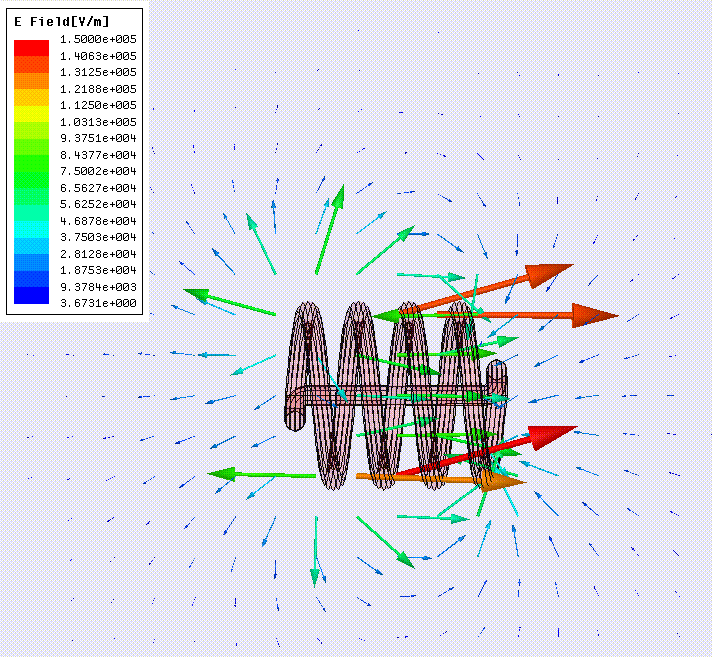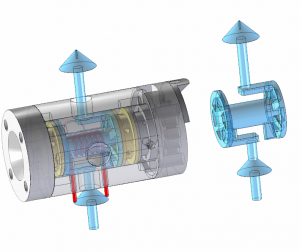The advent of very fast MAS using small diameter rotors has revolutionized solid state NMR of biological samples by providing useful H-1 resolution and enabling H-1 detection which provides enhanced sensitivity. However, frictional heating at high spin rates and the use of high power H-1 decoupling in C-13 and N-15 evolution periods can lead to severe sample heating. Using finite element high frequency structure electromagnetic field simulation codes, we have designed a variety of E-field shields to minimize decoupler heating, and are implementing these in novel MAS turbine module designs that provide for enhanced spinning stability, elimination of microphonics, and superior sample thermal management. In collaboration with the National High Magnetic Field Laboratory we are applying these designs to a triple resonance probe for the 36.6 T hybrid, which will make it possible for us to explore the advantages and challenges of MAS NMR at 1.5 GHz.
E-field simulation for coil resonated at 800 MHz

